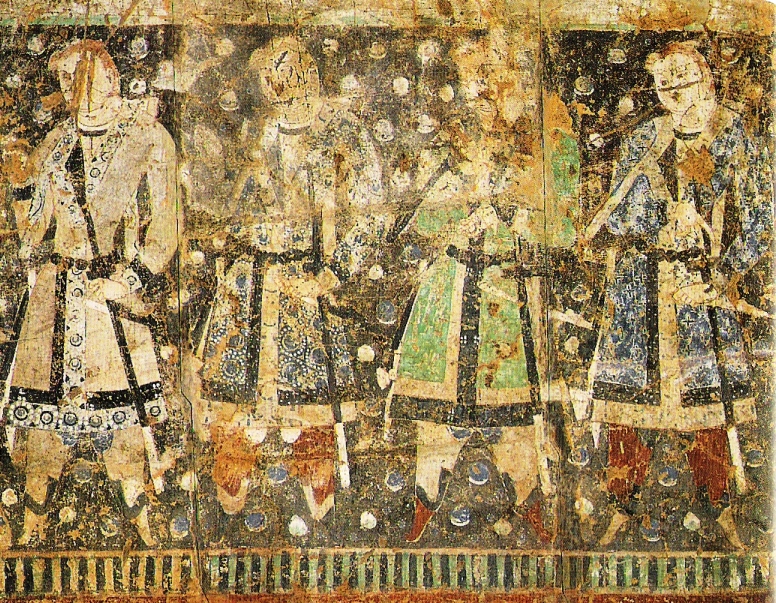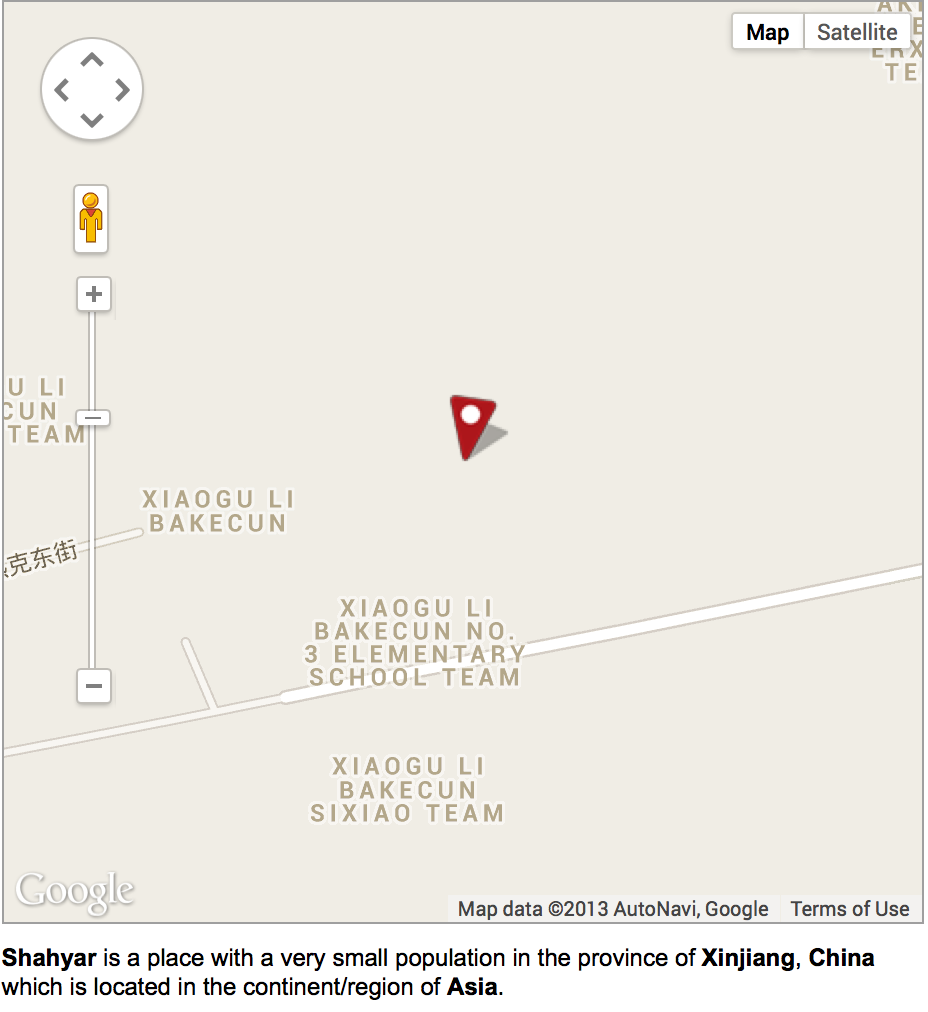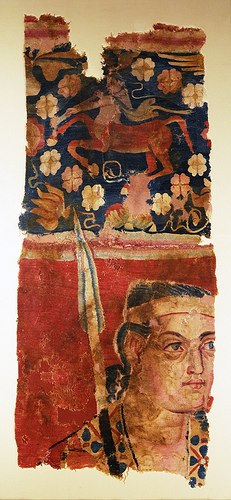The article below has been forwarded to Kavehfarrokh.com by Sheda Vasseghi. Kindly note that a number of sentences and paragraphs have also been added/edited by Kavehfarrokh.com into the Sheda Vasseghi article. Two additional pictures and captions have been added with a caption added for the picture originally forwarded by Sheda Vasseghi.
 Sheda Vasseghi has a Master of Arts in Ancient History, with honors, emphasis on Ancient Persia, from American Military University (West Virginia) and a Master of Science in Business Administration from Strayer University (Washington, DC). Ms. Vasseghi is an adjunct professor of history at Northern Virginia Community College. She is also a correspondent with Freepressers in relation to Iran’s affairs. Ms. Vasseghi is a spokeswoman for Azadegan Foundation, a non-profit organization in support of a secular, democratic Iran. She joined persepolis3D in 2003 in handling historical consultation on Iran’s history as well as public relations matters. Ms. Vasseghi may be contacted in relation to the following: (1) planning exhibitions for advertising purposes in promoting historical and cultural awareness of ancient and modern Iran (2) educational services such as conducting and providing classes, workshops, and seminars featuring interviews and speeches in the field of Iranian affairs (3) custom writing services in the field of Iranian affairs and (4) writing of articles for professional journals in the field of Iranian affairs. Ms. Vasseghi may be contacted at [email protected].
Sheda Vasseghi has a Master of Arts in Ancient History, with honors, emphasis on Ancient Persia, from American Military University (West Virginia) and a Master of Science in Business Administration from Strayer University (Washington, DC). Ms. Vasseghi is an adjunct professor of history at Northern Virginia Community College. She is also a correspondent with Freepressers in relation to Iran’s affairs. Ms. Vasseghi is a spokeswoman for Azadegan Foundation, a non-profit organization in support of a secular, democratic Iran. She joined persepolis3D in 2003 in handling historical consultation on Iran’s history as well as public relations matters. Ms. Vasseghi may be contacted in relation to the following: (1) planning exhibitions for advertising purposes in promoting historical and cultural awareness of ancient and modern Iran (2) educational services such as conducting and providing classes, workshops, and seminars featuring interviews and speeches in the field of Iranian affairs (3) custom writing services in the field of Iranian affairs and (4) writing of articles for professional journals in the field of Iranian affairs. Ms. Vasseghi may be contacted at [email protected].
================================
Sasanian Persian King Narseh, the last Iranian king post-first Islamic invasion of mid-7th c. crowned in exile, is often with us … as noted before a group of Iranian nobility including Sasanian kings were given refugee in the Chinese court – Tang dynasty; hence, my affections for that Chinese era … many Iranian princes served as military commanders in the Chinese army and Iranians in general settled in the region in trying to make a new life for themselves.
It is notable that a small town near Xinjiang (where many Sassanian nobility had settled) is called “Shahyar” (Persian: companion of the king). Xinjiang has, since ancient times, been a multicultural region with contacts made with several Iranian peoples, especially the Soghdians of Central Asia. The following is based on Chinese records regarding the region: Since ancient times Xinjiang (the Western Regions in China) has been home to as many as 30 ancient ethnic groups such as Persians, Greeks, Indians, Chinese, Turks, and the like, some intercultural tools developed early on for social interaction and commerce such as varied linguistic developments … among 30 languages spoken in Xinjiang region are Iranian Persian and Sogdian … among 20 written languages are Iranian Persian, Sogdian, and Manichean … from the 5 different scripts adopted in the region, one used for Yutain, Tubo and Phags-pa come from sisters to Iranians, the Indian Brahmi script; and one used for Sogdian and Turkic scripts come from Persian Aramaic alphabet … Readers are invited to see the video below discussing the findings in the region. Note that a large amount of Sasanian Persian coins have been discovered, alongside other Iranian-style textile; however the expert discussing these findings refrains any mention of their Iranian connections. Instead he provides a general (non-descriptive) overview that refer to inspirations from “some place” … it would appear that this is consistent with some select academic circles that have a tendency to downplay or avoid mention of possible Iranian origins for cultural artifacts. Secrets of the Silk Road: Trade (HMNS.org).
 [Click to Enlarge]As noted in the above Google Maps description: “Shahyar is a place with a very small population in the province of Xinjiang, China which is located in the continent/region of Asia”. Cities, townships and locales close to Shahyar include ShorYar, Xayar, Schahjar and Chahyar. The closest major cities include Aksu, Yining, Shihezi and Urumqi (Urumchi).
[Click to Enlarge]As noted in the above Google Maps description: “Shahyar is a place with a very small population in the province of Xinjiang, China which is located in the continent/region of Asia”. Cities, townships and locales close to Shahyar include ShorYar, Xayar, Schahjar and Chahyar. The closest major cities include Aksu, Yining, Shihezi and Urumqi (Urumchi). A rectangular piece of tapestry coming from the Xingjian Ughur Autonomous Region of China clearly showing Sasanian Persian influences in design and artwork. The physiognomy of the person drawn in the tapestry is Caucasoid as opposed to Asiatic, indicative of the strong Indo-European presence in the region since proto Indo-Europeans (i.e. the Tocharians) first entered the region thousands of years ago (Picture source: blog.hmns.org). Several Western researchers however suggest that the person depicted above is a Greek.
A rectangular piece of tapestry coming from the Xingjian Ughur Autonomous Region of China clearly showing Sasanian Persian influences in design and artwork. The physiognomy of the person drawn in the tapestry is Caucasoid as opposed to Asiatic, indicative of the strong Indo-European presence in the region since proto Indo-Europeans (i.e. the Tocharians) first entered the region thousands of years ago (Picture source: blog.hmns.org). Several Western researchers however suggest that the person depicted above is a Greek.



